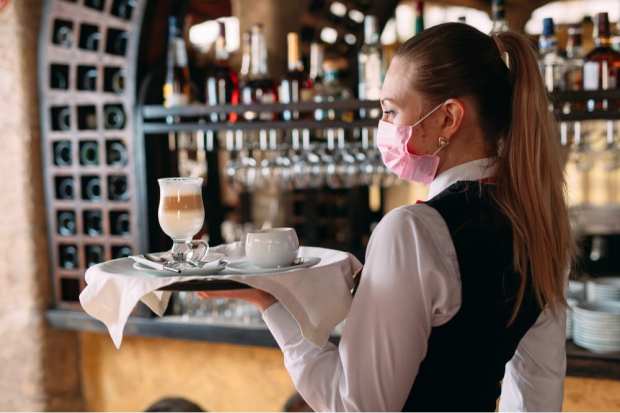Sales Declines Slow At US Restaurant Chains

Restaurant dining is not yet in positive territory, but the declines at major U.S. chains are shrinking, according to a press release from NPD Group, a New York-based market research company.
For the week ending Aug. 16, sales declines at restaurant chains improved to the single digits after 21 weeks of double-digit dips, according to the release.
Customer sales fell by 9 percent compared to a year ago, a 35-point gain from the sharpest decline of 44 percent from the pre-COVID-19 week ending April 12, the release stated.
“Although transactions are still down, the move into the single digits is a positive sign for the U.S. restaurant industry,” said David Portalatin, NPD food industry advisor, in the release. “Although we’re stuck in neutral for now, I firmly believe there is still a lot of upside recovery for restaurants. My belief is rooted in one reality: Consumers are not willing to give up on the convenience and experience a restaurant meal brings to them and their families regardless of the barriers.”
Sales at major quick-service restaurant (QSR) chains, which represent most of the transactions, slipped 8 percent compared to the week ending Aug. 16, 2019. Dine-in chain restaurants, which were shuttered to prevent the spread of COVID-19, saw sales fall by 19 percent versus a year ago, a 57-point gain from the steepest decline of 76 percent in the week ending April 12, researchers found.
With winter approaching and eliminating the option of outdoor dining and without more Paycheck Protection Program (PPP) relief, experts predict the sector could see another round of bankruptcies.
While dining increased over the summer as communities eased restrictions on outdoor dining, the dips in temperatures ahead are expected to cool the modest gains made.
“If it’s a bad COVID winter, it’s going to be a horrible winter for restaurants,” JLL’s Head of Restructuring Services Thomas Mullaney said.
But Wyman Roberts, CEO of Brinker International, the Dallas-based owner, operator of more than 1,600 Chili’s Grill & Bar and Maggiano’s Little Italy restaurants, said he sees a bright spot.
Ongoing investments in technology helped the company “grow the business nicely” through its latest quarter that ended in June, he said. Digital orders accounted for just 20 percent of sales pre-pandemic, but amid the crisis, they’ve grown to 50 percent.
“I don’t think we’ll ever go back to the mix we ran prior,” Roberts said.
